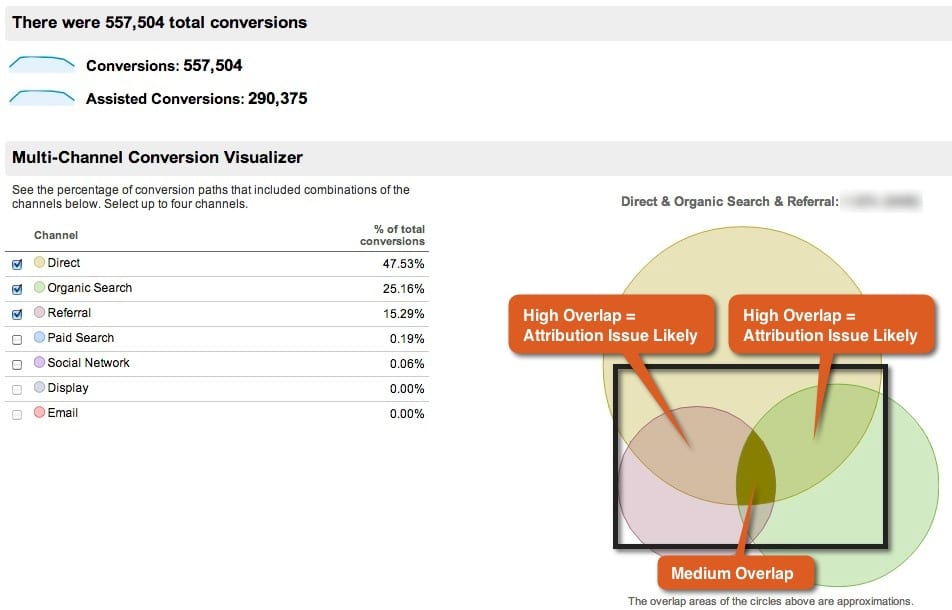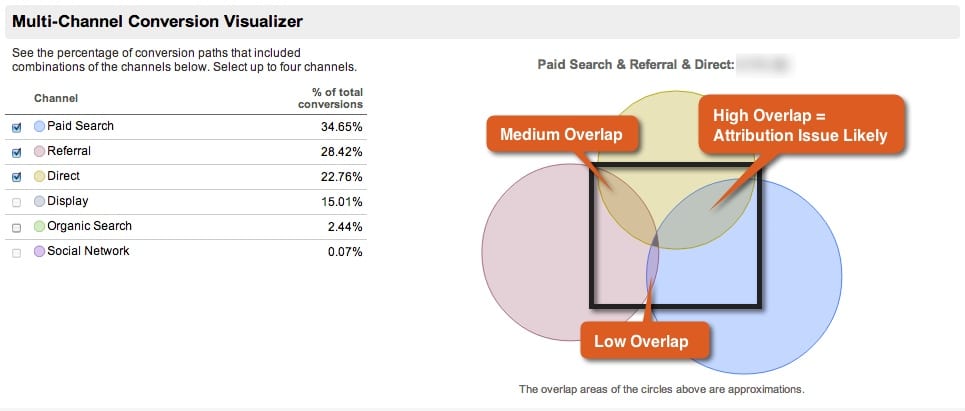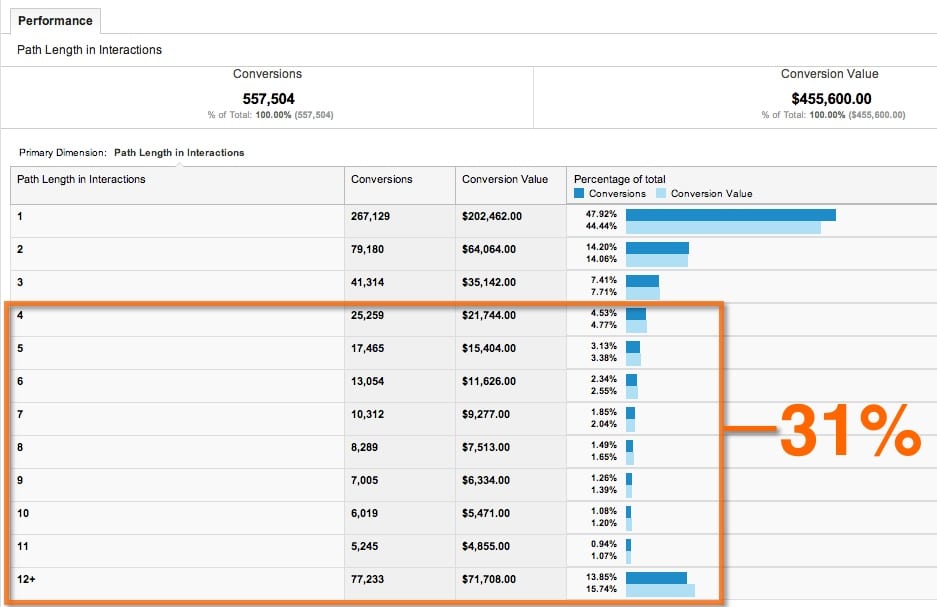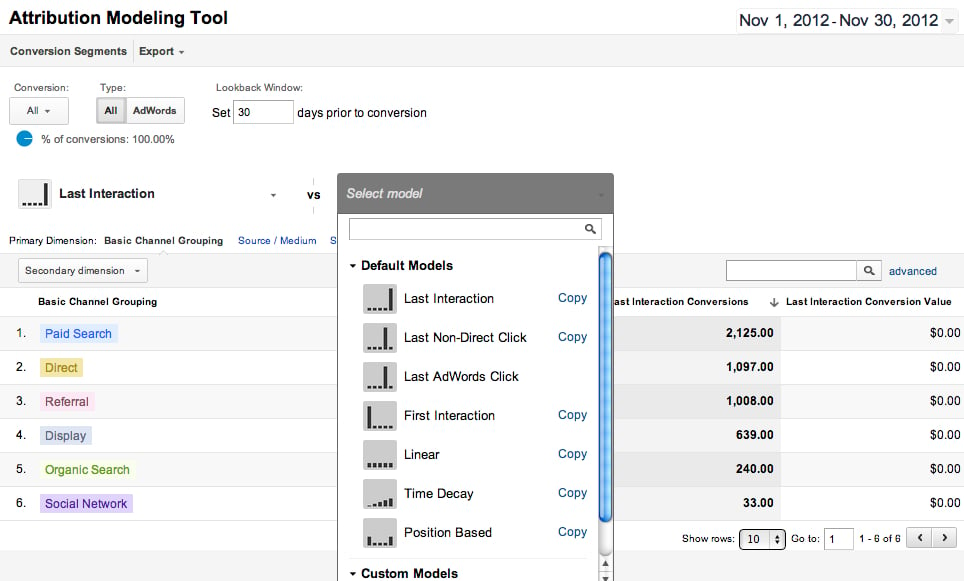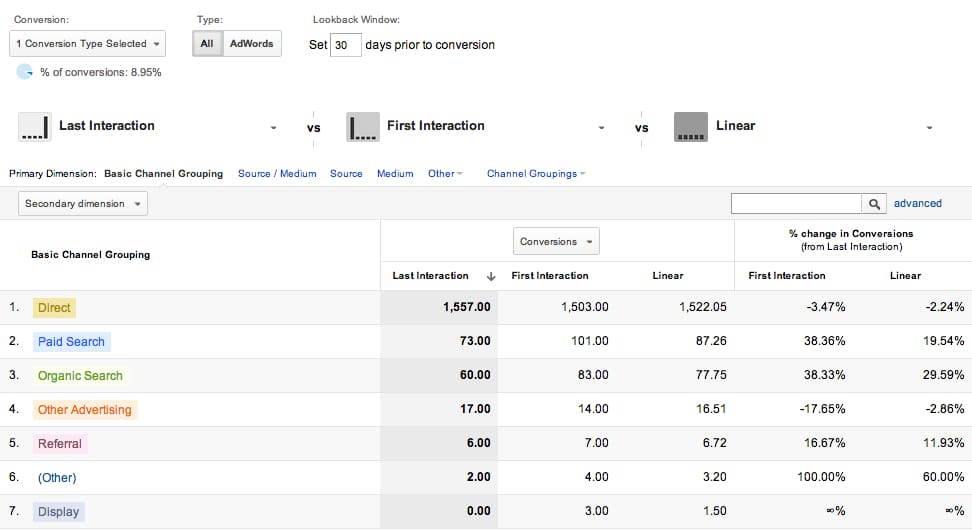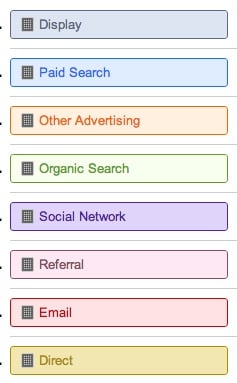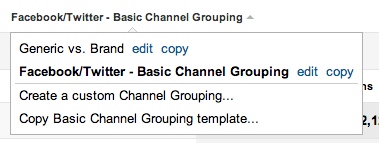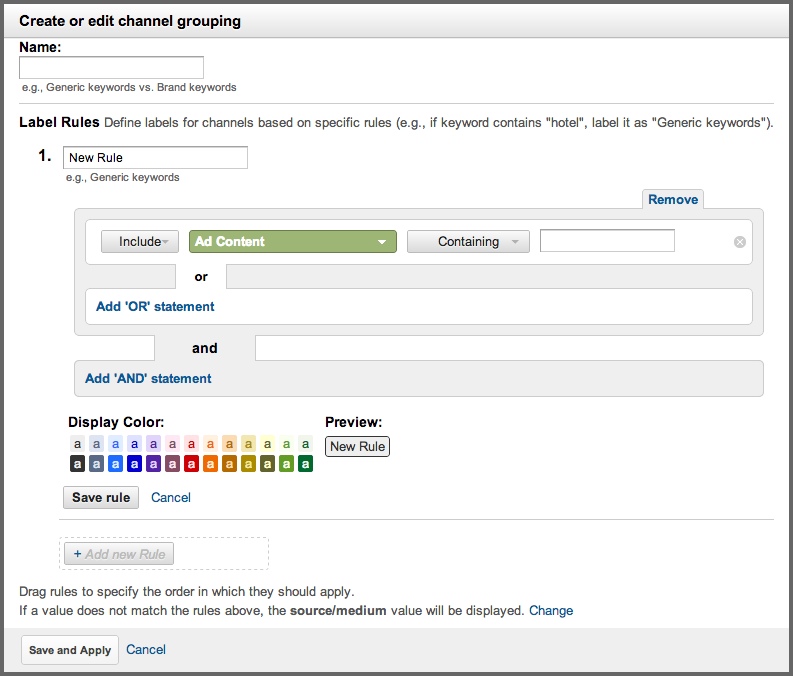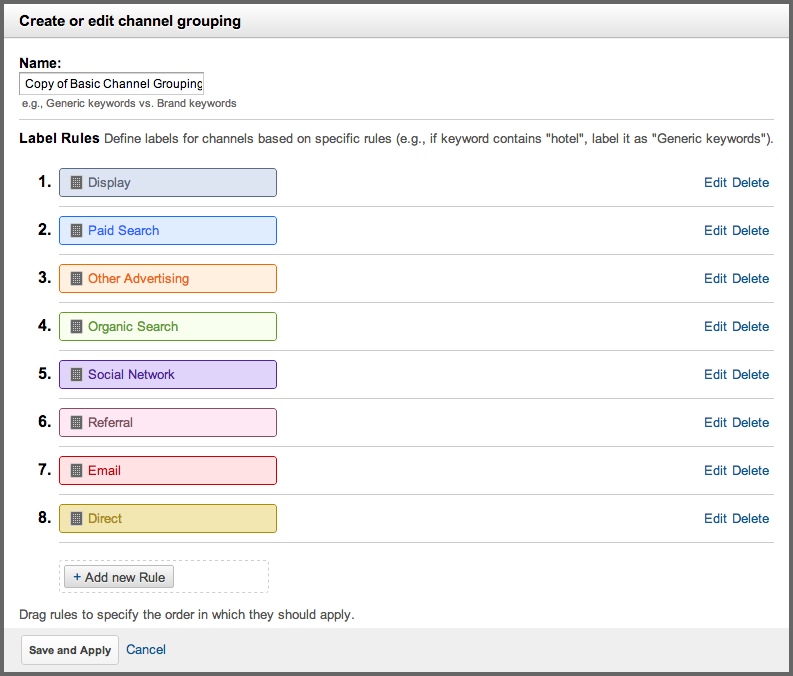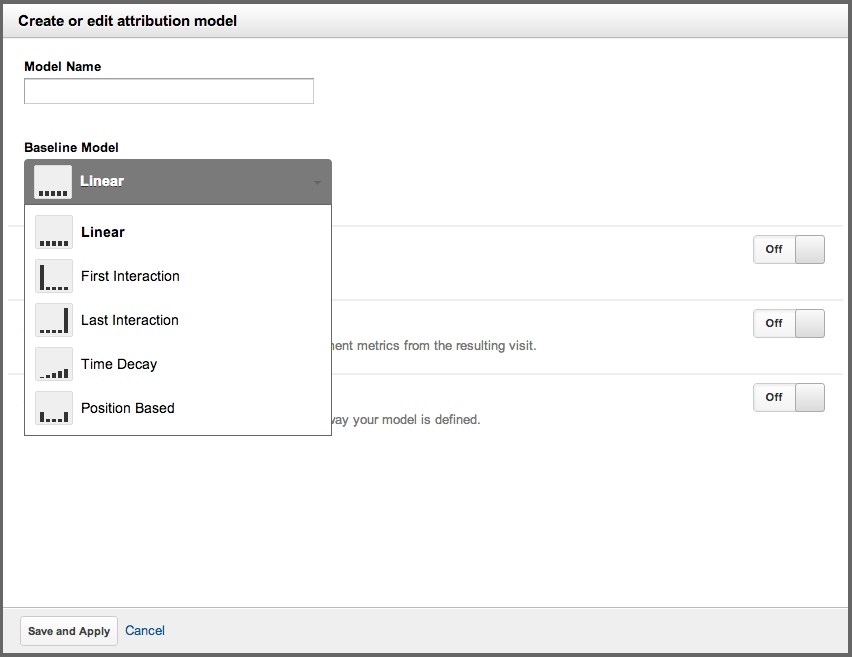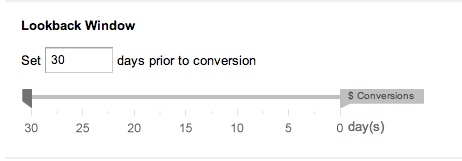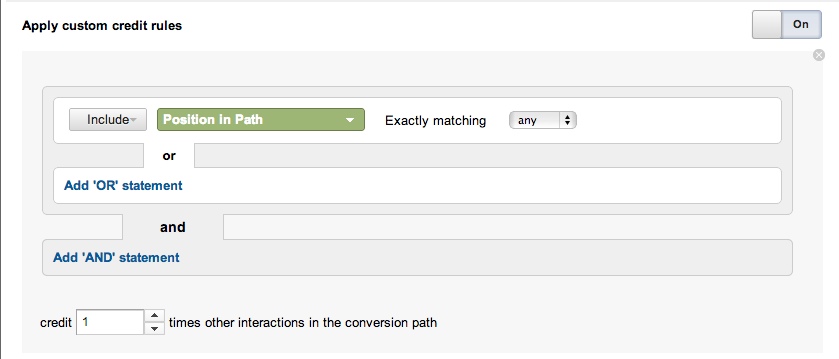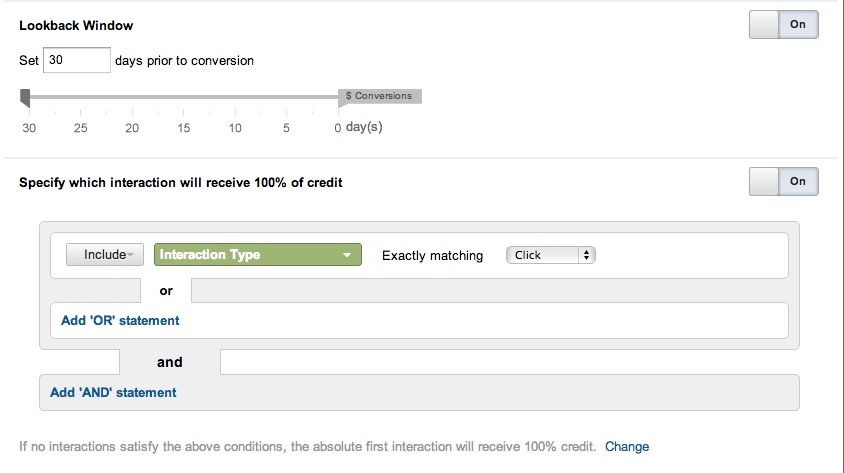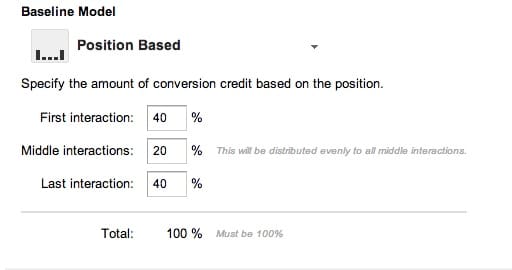What is Google Attribution Modeling? Do you need it?
Good read: Attributie hoe werkt dit en hoe is dit opgebouwd.What is Google Attribution Modeling? Do you need it?
Let’s start with the definition of Attribution Modeling for those who are new to this concept:
Attribution Modeling is the science of determining the value of each customer touch point leading to a conversion. It helps you understand the customer journey and justify your marketing spend.
Attribution Modeling can help Marketers answer questions like:
- Most of my conversions come from branded SEO and Direct traffic;
are my other marketing channels worth the effort? - I get a lot of traffic from paid advertising, but it doesn’t lead to many conversions;
should I continue to invest in paid search? - What keywords are people using to research my products that lead to purchases?
If you’ve ever asked these questions, or ones like them, this post is for you.
The Attribution Modeling Tool has been a Google Analytics Premium only feature up until now. But now it is slowly rolling out to everyone who uses Google Analytics.
In this post we’ll go over;
- how to determine if you need attribution modeling,
- how to setup attribution modeling,
- and how to customize it.
First…do we have Attribution Issues?
Before we jump right into the tool it’s helpful to identify if we have possible attribution issues by using the Multi-Channel Funnels Reports. Identifying possible attribution issues has been possible for some time in Google Analytics. However, we’ve found that few companies are effectively using the Multi-Channel Reports. Hopefully, usage will increase with the addition of Attribution Modeling. There are a lot of conversions with a visit path like this one where the last click is getting more credit than it deserves.
![]()
Let’s do a quick review of Multi-Channel Funnels and how to use the reports to determine if you have a potential attribution issue. There are three main reportsthat I look at to observe the level of channel interaction.
Report #1: Multi-Channel Funnel Overview
The Multi-Channel Funnel Overview Report gives you a quick, visual indication of how channels interact leading to conversions. You can quickly see how much overlap there is between the chosen channels. In the above example, you can see that organic search, direct, and referral overlap considerably with about half of all referral interactions overlapping with other channels. (Make sure you select a variety of channel combinations. You can select up to 4 at once.)
This Multi-Channel Funnel report screenshot shows there is little overlap between paid search and referral interactions. Not much chance of an attribution issue between these two channels. However, direct and paid have a high overlap which indicates there is a strong chance of an attribution issue between these channels.
- Is there little to no overlap? If so, you likely have less of an attribution issue.
- Is there a good amount of overlap? (between two or more channels) If so, comparing attribution models other than the default will likely give you important insights into how those channels interact.
Report #2: Multi-Channel Funnel Time Lag
This report shows the time lag from first visit to conversion. If you have a relatively high percentage (20% or greater) of multi-day paths then you’re more likely to have attribution issues. In this example, more than 35% of the time lag in days is greater than 1, which means this client would be wise to investigate potential issues with proper marketing channel attribution. (Keep in mind, because of the limited 30 day lookback window, many of the conversions with 0 days of time lag are actually 30+ day lag time conversions.)
Report #3: Multi-Channel Funnel Path Length
If a relatively high percentage (20% or greater) of your paths are greater than 3 then you’re more likely to have attribution issues that you can investigate using the Attribution Modeling Tool. In this example, more than 30% of path lengths are greater than 3, which means this client would be wise to investigate issues with proper marketing channel attribution.
Whether your attribution issue is small or large, by examining the multi-channel funnel reports you’ll start to have an idea of how your customers are interacting with your site in the multi-visit path leading up to conversions.
Attribution Modeling Tool
Now it is time to jump in and show you how to compare, setup and customize your Google Analytics attribution model in minutes.
Compare Attribution Models
If we suspect that the default attribution model is not accurately reflecting the value of particular channels we can now use the Attribution Modeling Tool to test other attribution models. Some channels are more likely to bring people to your site early in the path to conversion. Other channels are more likely to be in the middle of the path to conversion. These types of channels are typically undervalued by Google Analytics because they’re not the last click.
Attribution Modeling give you the ability to compare up to 3 models to observe what changes in value a channel has based on these models. In the example below the Paid Search and Organic Search channels receive more credit with the First Interaction and Linear models than they do with Last Interaction. This type of observation affects your decisions on where to put your marketing efforts.
Default Attribution Models

Last Interaction – The Last Interaction Model is the default model within the Attribution Modeling tool. This is different than in other reports within Google Analytics. Outside of Multi-Channel Funnels the default model is Last non-Direct Click. This gives all of the credit to the last interaction in the path.
Last non-Direct Click – This is the default model throughout the rest of Google Analytics and it is often helpful to compare this model to the other models.
Last Adwords Click – This model gives all of the credit for a conversion to the last Adwords click prior to that conversion. This is helpful when you want to analyze the effectiveness of Adwords no matter where an Adwords click occurs in the path.
 First Interaction – This gives all of the credit to the first channel that brought that visitor to your site. You want to use this model when you suspect that a channel is under valued because it is bringing a lot of first visits to your site, but few conversions. Perhaps your site and company are fairly new and this channel’s value is that it is how people find you the first time, but they’re unlikely to use the channel for subsequent visits.
First Interaction – This gives all of the credit to the first channel that brought that visitor to your site. You want to use this model when you suspect that a channel is under valued because it is bringing a lot of first visits to your site, but few conversions. Perhaps your site and company are fairly new and this channel’s value is that it is how people find you the first time, but they’re unlikely to use the channel for subsequent visits.
 Linear – This gives equal value to all interactions in the path to conversion. So if there is a conversion with a path length of 4, each channel in that path would get credit for 25% of the conversion. This is a good way to evaluate the overall contribution of your channels without regard to their position in the sequence.
Linear – This gives equal value to all interactions in the path to conversion. So if there is a conversion with a path length of 4, each channel in that path would get credit for 25% of the conversion. This is a good way to evaluate the overall contribution of your channels without regard to their position in the sequence.
 Time Decay – This gives more credit for a conversion the closer the interaction occurs to the conversion (time wise). You would want to use this when there are specific promotional periods that you want to give greater credit to.
Time Decay – This gives more credit for a conversion the closer the interaction occurs to the conversion (time wise). You would want to use this when there are specific promotional periods that you want to give greater credit to.
 Position Based – Position based gives more credit to the first and last interactions while equally distributing the rest of the credit to the middle interactions. You’ll want to use Position Based as a hybrid between First Interaction and Last Interaction. It allows you to see both of those get credit.
Position Based – Position based gives more credit to the first and last interactions while equally distributing the rest of the credit to the middle interactions. You’ll want to use Position Based as a hybrid between First Interaction and Last Interaction. It allows you to see both of those get credit.
With the basics covered you can start to better understand how your traffic channels perform in the path to conversion. That’s great, but we’re just getting started. The next step in the Attribution Modeling journey is to use the customizations available to create analysis opportunities that help you analyze your particular set of data.
Custom Channel Grouping
The Attribution Modeling tool uses basic channel groupings:
While useful, you’ll quickly want to start experimenting with channel groupings that are more detailed than the default groupings. With custom channel groupings you have the ability to dive deeper into your data by creating channels that are more meaningful for your business.
Some examples of possible custom channels are:
- Branded Keywords (Organic or Paid)
- Non-branded Keywords (Organic or Paid)
- Specific Email Campaigns
- Facebook / Twitter / Instagram / Pinterest
- Affiliate Networks
- Display Advertising Networks
- Specific Search Engines (Google, Bing, etc)
Two Custom Channel Options
Let’s look at how to setup your custom channel groupings. To start a new custom channel grouping you have two options.
Option #1 – Create New Custom Channel from Scratch
The first option is to create a new custom channel from scratch with the “Create a custom Channel Grouping…” option in the drop-down. Next, in the new screen (shown below) you will create a ‘Name’ for your channel grouping and create ‘Label Rules’ for each channel you want to display in your reports.
Option #2 – Copy and Edit Existing Custom Channel
The second way to create a new custom channel is to copy an existing channel grouping and edit the ‘Label Rules.’ If you were to copy the basic channel grouping you get this screen:
Edit the channel grouping by doing the following:
- Edit the name to something meaningful and descriptive
- Edit one or more of the Label rules
- Add new Label Rules
- Reorder rules as needed
The power of custom channel groupings is in the ability to match the channels displayed in the reports with the channels that are most important to you and your company’s business. The next step is to create your own custom attribution models.
Custom Attribution Models
The base custom attribution models are a great starting point, but they may not perfectly represent how you want to attribute credit for conversions. Thankfully, the process to create a new attribution model is quite intuitive once you understand the base models (which we discussed earlier). When you create a new attribution model your first task is to choose a basic attribution model as the starting point.
Depending on what base attribution model you choose, you have different options for editing the model to fit your needs. Let’s look at how we can edit each model to better meet our needs.
Linear Model as Base
When you create a new model based on the Linear model you have three options for editing the model.
Lookback Window is available in other models as well and allows you to adjust the number of days that you want to look back to give value to a visit. It is currently adjustable from 1 to 30 days but that will be extended to 90 days in the future.
Adjust credit based on user engagement provides the ability to weight the credit given to a visit based on how engaged that visit was. For now there are two simple choices for engagement:
‘Apply Custom Credit Rules’ is where you can get really crazy. You can match a visit to any of the available dimensions (and combine them with the boolean operators) and adjust the credit that visits, which match those criteria receive. Do you want to give double credit to non-branded keywords? This is where you make it happen.
First Interaction and Last Interaction as Base
‘First Interaction’ and ‘Last Interaction’ share the same types of customizations available. They also have the lookback window and then you have the ability to adjust which interaction will receive the credit.
Time Decay as Base
Time Decay has all of the adjustment options, but with the added ability to adjust the half-life of the credit given to interactions. The higher the number you use the farther back in time the system will go giving full credit to the interaction. The smaller the number the shorter it takes before less credit is given.
Position Based model as Base
Position based allows you to create a custom model where you set the value given to the first interaction, last interaction, and the middle interaction.
Phew! This is a lot Attribution modeling is a lot to digest. However, once you do you’ll find new and better ways to analyze the performance of your marketing channels.

